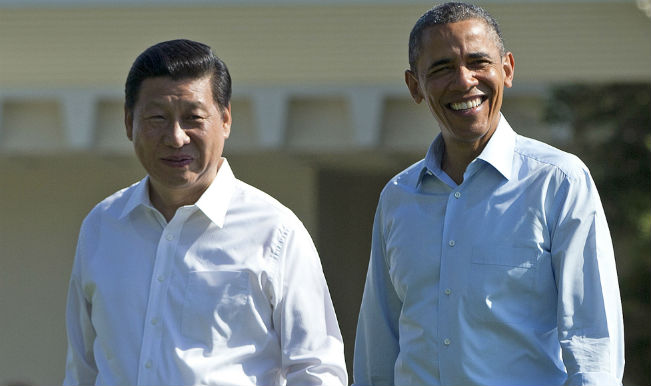
By Greg Odogwu
Once upon a time, many countries used China as excuse for inaction in the battle against climate change.
Asked to show concrete efforts at emissions reduction, these countries pointed to the fast developing Asian giant with its carbon emitting industries as their justification for nonchalance. In fact, during climate change talks, America and China had always been the major sides holding talks to fruitless standstill.
America usually pointed to the paradox that though China is technically a developing nation, its lightning-speed industrialisation made it a huge emitter; China pointed to the fact that albeit America’s global political leadership, she refused to ratify the Kyoto Protocol – the only globally agreed document to fight climate change.
But today the story has changed. As if in tandem with its dizzying industrial development, China is day-by-day unveiling eco-plans and strategies that could turn the most avowed eco-friendly European country green with envy. One has to give it to the Chinese for exhibiting a rugged determination to externalise deep-felt responsibility regarding matters of the environment.
Just last month it submitted its carbon emissions reductions pledge to the United Nations Framework Convention on Climate Change ahead of the crucial climate change talks in Paris later this year. All countries are expected to submit their national pledges to reduce carbon emissions beyond 2020, also known as Intended Nationally Determined Contributions.
China vowed to cut its greenhouse gas emissions per unit of gross domestic product by 60-65% from 2005 levels under the plan. The pledge has been eagerly awaited as the country is the world’s largest carbon emitter. It said it would increase the share of non-fossil fuels as part of its primary energy consumption to about 20% by 2030, and peak emissions by around the same point, though it would “work hard” to do so earlier.
To be more graphic, it plans to increase its installed capacity of wind power to 200GW and solar power to around 100 gigawatts (GW), up from 95.81GW and 28GW today, respectively. It will also increase its use of natural gas which is expected to make up more than 10% of its primary energy consumption by 2020. According to estimates by E3G, a European-based environmental thinktank, China’s plan will see it install as much low-carbon energy as the entire US electricity system capacity to date.
China’s pledge largely reflects commitments it made late last year as part of an agreement struck with the US, which marked a watershed in the global fight against climate change. The whole world stood still with palpable jubilation when the two hitherto “climate combatants” in November 2014 came out in a joint announcement to the world about their climate action plans.
On that fateful day, the two unveiled a secretly negotiated deal to reduce their greenhouse gas output, with China agreeing to cap emissions for the first time and the US committing to deep reductions by 2025.
The pledges in an agreement struck between President Barack Obama and his Chinese counterpart, Xi Jingping, provided an important boost to international efforts to reach a global deal on reducing emissions beyond 2020 come December this year.
China agreed to cap its output by 2030 or earlier if possible. Previously China had only ever pledged to reduce the rapid rate of growth in its emissions. Now it has also promised to increase its use of energy from zero-emission sources to 20% by 2030. The United States has pledged to cut its emissions to 26-28% below 2005 levels by 2025.
Nevertheless, it should be noted that despite “pledging late”, China’s climate actions had been ongoing without the symbolic framework provided by political guarantees and timelines that characterise the UNFCCC system. For instance, in 2013 China led the world in renewable energy production, with a total capacity of 378 GW, mainly from hydroelectric and wind power.
As of 2014, China lead the world in the production and use of wind power, solar photovoltaic power and smart grid technologies, generating almost as much water, wind and solar energy as all of France and Germany’s power plants combined. China’s renewable energy sector is growing faster than its fossil fuels and nuclear power capacity. Since 2005, production of solar cells in China has expanded 100-fold.
As Chinese renewable manufacturing has grown, the costs of renewable energy technologies have dropped dramatically, and this is trickling down to poor countries that wish to go green. Innovation and market expansion ensure this growth is sustained.
China is also engaged in a massive tree-planting program that has helped to offset tropical deforestation, and suck some of the climate-changing carbon dioxide out of the atmosphere. Reforestation efforts in China, combined with regrowth on abandoned farmland in Russia, have helped offset 81% of the loss in above-ground biomass carbon lost to tropical deforestation since 2003, according to a new study in the academic journal Nature Climate Change.
Lead study author Yi Liu of Australia’s University of New South Wales, said that the carbon storage in Chinese forests increased by about 0.8 billion tons (0.72 billion tonnes) between 2003 and 2012.
There are a couple of truths we could extract from China’s renewable energy and environment sector growth and which should be noted by other developing countries like Nigeria.
Firstly, China sees renewables as a source of energy security, not just of carbon emission reductions. I perused a document released by China’s State Council in September 2013: China’s Action Plan for the Prevention and Control of Air Pollution, which illustrates government desire to increase the share of renewables in China’s energy mix. Unlike oil, coal and gas, the supplies of which are finite and subject to geopolitical tensions, renewable energy systems can be built and used wherever there is sufficient water, wind and sun.
Secondly, this significant green growth is China’s way of adapting to emerging challenges both as a highly populated country and as a nation facing emerging environmental exigencies. Let us look at a couple of its national actions.
It was reported recently that Beijing closed or relocated 185 firms in the first half of 2015 as part of China’s efforts to combat air pollution. Then there was another earlier report that, beset by choking traffic and heavy air pollution, the city planned to take more than 350,000 high-polluting vehicles off inner city streets.
The country also adopted a new regime of carbon credit schemes in an effort to move companies towards less polluting activities and advance clean technologies. Over 190 companies in Shanghai from various sectors, including steel, iron and aviation, have contributed to the initiative. Additionally, a pilot scheme was launched in Beijing last month, with 435 companies taking part.
Thirdly, what China is doing should be a thing of pride for the developing world as a negotiating block at UNFCCC COP’s. According to a recent research from UNEP “Renewable energy investments in developing countries are close to overtaking those in the developed world for the first time. In 2014, US$270 billion was invested in clean energy technologies, a 17% leap from the 2013 figure of $232 billion, with a record 103GW of power generation capacity added around the world.
Of that, $139bn was directed towards industrialised countries and $131bn in emerging or developing economies. China experienced a 39% surge from 2013, with one in every three dollars spent on renewables around the world invested in the country.”
Therefore, China stands as a symbol of the developing world’s resolve to adopt development based adaptation and mitigation strategies. However, hope dims when one sees no robust “green body language” from some of the members of developing world who are still waiting for “green freebies” before they can hit the ground running.










